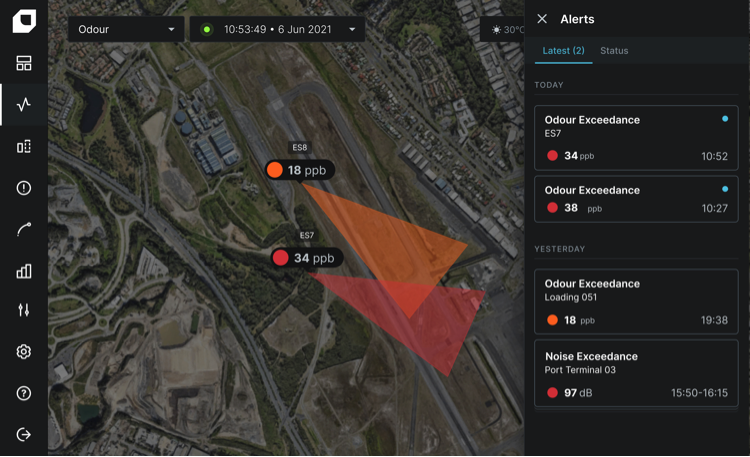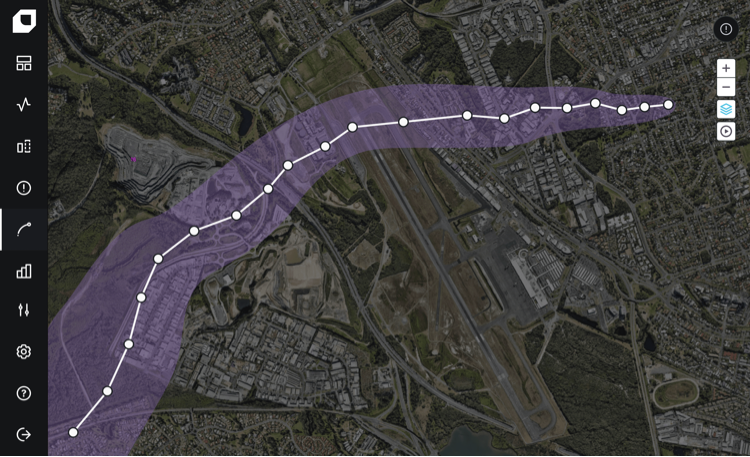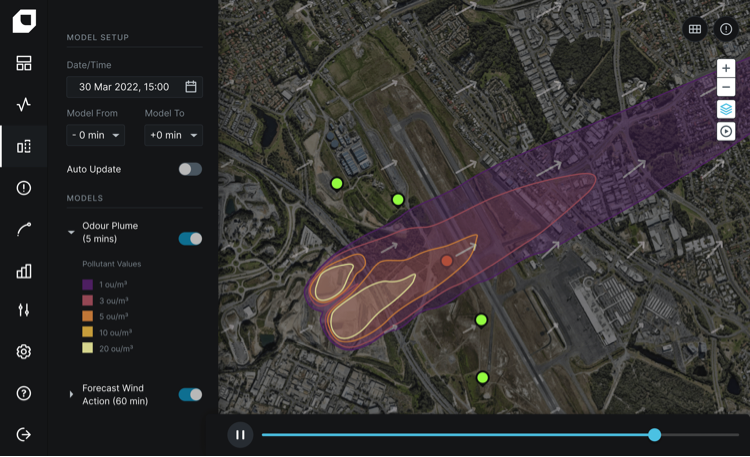Sponsored by Envirosuite

First, let’s address some well-established facts related to solid waste management and odor.
It’s widely known that waste generation is increasing at astronomical rates worldwide. Populations are growing closer to waste management operations that were previously isolated. Estimates of the next few decades show no indication of municipal solid waste generation slowing down. By 2050 it’s anticipated to soar by 70 per cent, eventually reaching 3.4 billion metric tons of waste each year.
While nobody wants to be directly impacted by the odor produced at waste management sites, it’s a growing concern for composting and landfill site managers.
Why is odor management a key priority for modern landfills?
Modern landfills are more than just ‘dumps’. They are engineered and operated to find a careful balance between managing waste and satisfying environmental performance objectives.
Once waste is delivered to an active site, the presence of oxygen supports certain groups of bacteria, which can intensify the smell. On the other hand, when the waste is buried and is no longer in contact with atmospheric oxygen, different bacteria continue to break it down. During this process, odorless methane is produced along with several other odorous compounds, all of which make a mixture known as landfill gas (LFG).
Odor is still a challenge for operators today despite a wide range of abatement options. It’s critical to know the precise time to engage odor control measures or how external factors like the weather might determine future impact. Lack of knowledge of these areas can lead to impacts on nearby communities which creates costly investigations and disruptions from lawsuits and fines. This results in poor publicity for site operations in the media and a damaged reputation.
In short, proactive odor management at modern landfills is essential to control unpleasant smells and maintain positive community relationships.
But, what role does community engagement play in odor management at landfills?
In today’s world, the news of even the slightest environmental incident can spread like wildfire and can result in hefty penalties for businesses—particularly for solid waste management operators. Odor incidents often occur quickly and without warning due to sudden change in weather. There are always examples of these scenarios unfolding in the news.
However, effective community engagement strategies can help landfills improve their ability to mitigate odor events and protect their social license to operate. Community engagement helps landfills maintain positive relationships with those in neighboring areas. Particularly when engagement is built on a foundation of transparent communication, collaboration and trust – all of which can now be supported by highly accurate, easily understood data.
Effective community engagement often starts with refuting or accepting responsibility for odor incidents, and then personnel can work backwards from the location of the odor complaint to find the cause of the problem using innovative processes like reverse trajectory air quality modelling. With this information you can not only make required changes – and effectively allocate resources to do so – but also communicate transparently with communities every step of the way.
Incorporating community engagement into odor management strategies at landfill sites.
Sharing accurate, meaningful data that can be easily understood by non-subject matter experts is an important aspect of the process. However, when incorporating communities in odor management strategies, landfills also need to ensure they facilitate methods where individuals are invited to voice their opinions and join the conversation.
While not too long ago this would have been difficult to achieve and maintain, the limitless potential of technology has made it possible for landfills to seamlessly yet effectively manage community relationships in an interactive way.
Using proactive odor management software to support community engagement.
Environmental intelligence (EI) providers such as Envirosuite offer tools that make it easier to comply with regulatory conditions and engage with stakeholders to build ongoing relationships.
Here are a few examples of how landfills could use software to incorporate neighboring communities into its odor management strategy:
1. Real-time data for landfills to get ahead of unfolding odor issues
It’s essential for a landfill site to be able to visualize data and insights in real time. Operators can use this information to mitigate odor incidents and prevent potential threshold exceedances at the site boundaries in the first place. Proactive odor management software enables operators to act on highly accurate insights on odor and hyperlocal weather to mitigate potential odor incidents in the future.

2. Faster complaint resolution by refuting or confirming responsibility for odor events
If someone in the community lodges a complaint, defensible data from reverse trajectory modelling helps landfills refute or confirm responsibility for the odor incident. Landfills can therefore communicate openly with the community with transparency and accurate, trusted data to support what their operations.

3. Forecasting emissions risk to get ahead of potential odor issues
Operators can stay ahead of odor incidents with advanced risk forecasting capabilities that are now available in modern odor management software. Emission impact modelling is powered by hyperlocal weather forecasting that provide a window in the future so landfill operations can be adjusted to minimize community impact.

How are today’s landfill operators using odor management software for community engagement?
Supporting odor mitigation with environmental intelligence at a landfill in California
A landfill located in California have facilities include operations such as composting and recycling. Although odor emissions have always been a nuisance in the area, but the issue escalated in the recent years with the residential rezoning and communities settling closer to the facilities.
- The landfill partnered with Envirosuite for its environmental management solution—EVS Omnis. Upon successful implementation of the platform, the staff at the landfill were able to:
- Validate odor measurement peaks with historical data and deduce a reason for the emissions either from their site or others
- Improve operations with insights gathered from collecting and analysing the data
- Demonstrate accountability and proactivity by monitoring odors measurements in real-time.
An odor abatement taskforce powered by environmental intelligence at DES
A local environmental regulatory body in Australia formed a team to ensure environmental standards are met in a busy industrial area that includes multiple landfills and composting operations. Comprised of specialist officers, the team needed to investigate and respond to concerns raised by the community about odors, dust, and other environmental nuisances in and around the industrial area.
In 2020, the regulatory body contracted Envirosuite to understand odor nuisance caused by landfill operations in the industrial area. The designated team worked with Envirosuite to install 6 eNose monitors across the area and implemented our comprehensive environmental intelligence platform, EVS Omnis, to:
- Identify odor sources in the locality
- Resolve community odor complaints quickly
- Allocate resources for incident response team
Download detailed case study here.
Landfills stand to benefit from odor management strategies that value community engagement
In today’s growing cities odor management strategies that support collaboration and communication with communities are crucial. While landfills are a necessary addition to the community, so too is upholding positive relationships with those in neighboring areas that could be directly affected by nuisances such as odor.
With access to data that improves the response time of odor mitigation, operators can keep community engagement at the forefront. For instance, through using insights to engage odor controls at precisely the right time and information that allows landfills to effectively navigate around the changing weather.
This approach helps landfills avoid costly investigations and hefty fines. Moreover, they can protect their reputation, preserve their social license to operate and future-proof operations.
Designed for rapid deployment, our monitoring and forecasting solutions can be implemented in the shortest of spans.
Contact Envirosuite to talk about your odor management requirements.
If you would like more information or have a question, fill out the form below and we will contact you.
